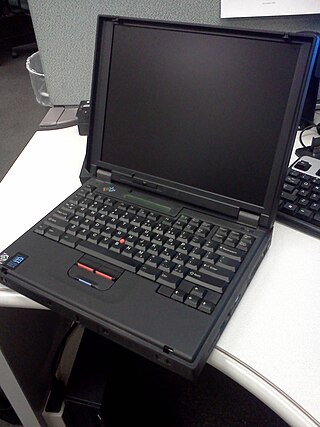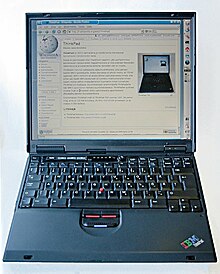
The Power Macintosh G3 is a series of personal computers designed, manufactured, and sold by Apple Computer from November 1997 to August 1999. It represented Apple's first step towards eliminating redundancy and complexity in the product line by replacing eight Power Macintosh models with three: Desktop and Mini Tower models for professional and home use, and an all-in-one model for education. The introduction of the Desktop and Mini Tower models coincided with Apple starting to sell build-to-order Macs directly from its web site in an online store, which was unusual for the time as Dell was the only major computer manufacturer doing this. Apple's move to build-to-order sales of the Power Macintosh G3 also coincided with the acquisition of Power Computing Corporation, which had been providing telephone sales of Macintosh clones for more than two years.

The Power Mac G4 is a series of personal computers designed, manufactured, and sold by Apple Computer from 1999 to 2004 as part of the Power Macintosh line. Built around the PowerPC G4 series of microprocessors, the Power Mac G4 was marketed by Apple as the first "personal supercomputers", reaching speeds of 4 to 20 gigaFLOPS. This was the first existing Macintosh product to be officially shortened as "Mac", and is the last Mac able to boot into classic Mac OS.

The Panasonic Toughbook is a line of rugged computers produced and marketed by Panasonic. The first model, the CF-25, was introduced in 1996. The Toughbook brand mainly competes with other lines of rugged computers, such as Dell's Rugged Extreme.

The Compaq Presario 1200 was a line of notebook computers produced between 1998 and 2000 by Compaq as part of Compaq Presario line.

The Sun Microsystems Ultra 80 is a computer workstation that shipped from November 1999 to 2002.

The Tecra is a series of business laptops currently manufactured by Dynabook Inc., a subsidiary of Sharp Corporation formerly owned by Toshiba. The number of Tecra notebook models available for sale is strictly dependent on the location: North and South America, Europe, Africa and South Africa, the Middle East or the South Pacific region.

The IBM ThinkPad 380 was a notebook computer series released May 13, 1997 by IBM as part of their ThinkPad laptop series. Notable for incorporating a CD-ROM and a floppy drive, it was considered a mid-range laptop by IBM at the time, and sold well. The series was the successor to the IBM ThinkPad 365.

The Personal Computer Series, or PC Series, was IBM's follow-up to the Personal System/2 and PS/ValuePoint. Announced in October 1994 and withdrawn in October 2000, it was replaced by the IBM NetVista, apart from the Pentium Pro-based PC360 and PC365, which were replaced by the IBM IntelliStation.
The IntelliStation is a family of workstations developed by IBM and first released in March 1997 as the follow-on to the PC Series 360 and 365. Certain IntelliStation M Pro Series were near hardware identical to low end IBM Netfinity 1000 Series network servers. In February 2002, POWER processor-based workstations, previously sold directly under the eServer pSeries brand, were also placed under the IntelliStation umbrella.

IBM ThinkPad 310 was a notebook computer series introduced in 1997 by the IBM corporation into the market as part of their ThinkPad laptop series. It was succeeded by the ThinkPad 380 series.

IBM ThinkPad 760 was a notebook computer introduced in 1995 by the IBM corporation into the market as part of the ThinkPad 700-series. It was succeeded in 1998 by the ThinkPad 770 series.

IBM ThinkPad 770 was a laptop designed and manufactured by IBM targeted for the business, enterprise and professional user. It was the last lineup in the ThinkPad 700-series, succeeding the 760 as the high-end laptop of the ThinkPad lineup. The line was produced from October 1997 to May 2000, and eventually replaced by the ThinkPad models A20m and A20p.

The Sony Vaio 505 series was a line of ultraportable notebook computers from Sony's VAIO brand. The introduction date in the United States was July 24, 1998.
The Sony Vaio 700 series were Sony's first Vaio branded laptops, starting with the 705 and 707 models, launched in Japan on July 1, 1997, and subsequently in the United States.

IBM ThinkPad 240 is an ultra-portable laptop computer designed and produced by IBM from June 1999 to 2001. It is one of the few ThinkPad 200 series models made available in America and was the smallest and lightest ThinkPad model produced to date. The 240 series was discontinued, and it was replaced with the ThinkPad X series in 2000.

The ThinkPad T series is a line of laptop computers. Originally developed by IBM, and introduced in 2000, the brand was sold along with the rest of IBM's business computer division to Chinese technology company Lenovo in 2005, who have continued to produce and market succeeding models.
The Ultra 60 is a computer workstation in a tower enclosure from Sun Microsystems. The Ultra 60 was launched in November 1997 and shipped with Solaris 7. It was available in several specifications.

The IBM ThinkPad 600 series was a series of notebook computers introduced in 1998 by IBM as an lighter and slimmer alternative to the 770 series. Three models were produced, the 600, 600E, and 600X; the series was succeeded in 2000 by the ThinkPad T20 series.

The IBM ThinkPad 365 is a notebook computer series developed by IBM and manufactured by ASE Group. It was released in North America in November 1995, and was the successor of the ThinkPad 360 series. The series had 8 models that were released before being discontinued, and was succeeded in 1997 by the ThinkPad 380 series.

The IBM ThinkPad 360 series was a notebook computer series introduced in 1994 by IBM as part of their ThinkPad laptop series. It was succeeded in late 1995 by the IBM ThinkPad 365 series.


















